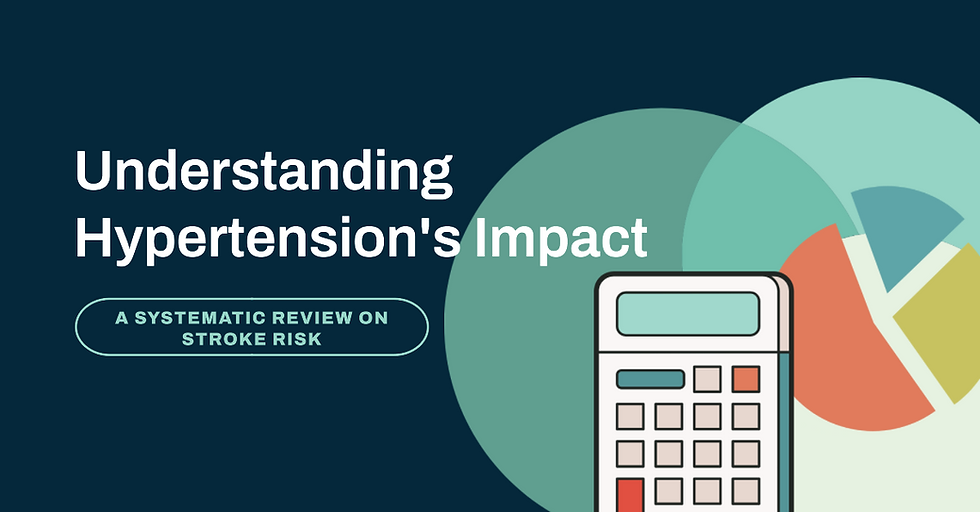The Role of Hypertension in Stroke Development: A Systematic Review
- Admin
- Mar 11
- 2 min read

Introduction
Hypertension, commonly known as high blood pressure, is the most significant modifiable risk factor for stroke. It contributes to both ischemic and hemorrhagic strokes by damaging blood vessels and increasing the likelihood of clot formation or vessel rupture. According to the World Health Organization (WHO), nearly 1.3 billion people worldwide suffer from hypertension, with a significant proportion unaware of their condition. Despite medical advancements, uncontrolled hypertension remains a leading cause of stroke-related morbidity and mortality. This systematic review examines the role of hypertension in stroke development, its underlying mechanisms, and potential strategies for prevention and management.
Mechanisms Linking Hypertension to Stroke
Hypertension contributes to stroke development through several physiological and pathological mechanisms:
Endothelial Dysfunction and Atherosclerosis Chronic hypertension damages the inner lining of blood vessels (endothelium), leading to inflammation and thickening of arterial walls. This promotes the formation of atherosclerotic plaques, which can rupture and block cerebral arteries, causing ischemic stroke.
Increased Risk of Embolic Events High blood pressure is associated with atrial fibrillation and other cardiovascular conditions, increasing the likelihood of blood clot formation. These clots can travel to the brain, resulting in embolic strokes.
Small Vessel Disease and Lacunar Infarcts Hypertension affects small blood vessels in the brain, leading to narrowing, blockages, or microhemorrhages. This contributes to lacunar infarcts, a type of stroke affecting deep brain structures and often linked to cognitive decline.
Hemodynamic Stress and Hemorrhagic Stroke Persistent high blood pressure weakens arterial walls, making them prone to rupture. This can lead to hemorrhagic strokes, particularly intracerebral hemorrhages, which have a high fatality rate.
Epidemiological Evidence
Numerous studies confirm the strong correlation between hypertension and stroke:
A meta-analysis of over 500,000 individuals found that every 10 mmHg increase in systolic blood pressure raises the risk of stroke by approximately 20-30%.
The INTERSTROKE study, a large-scale global study, identified hypertension as the most critical risk factor for stroke, accounting for nearly 50% of all cases.
In low- and middle-income countries (LMICs), where hypertension awareness and treatment are inadequate, stroke incidence is significantly higher compared to high-income nations.
Prevention and Management Strategies
Effective management of hypertension can drastically reduce stroke risk:
Lifestyle Modifications: Dietary changes (e.g., DASH diet), regular physical activity, smoking cessation, and reduced alcohol consumption are essential.
Pharmacological Treatment: Antihypertensive medications, including ACE inhibitors, beta-blockers, and calcium channel blockers, help control blood pressure and lower stroke risk.
Regular Monitoring: Routine blood pressure checks, especially for at-risk populations, ensure early detection and timely intervention.
Conclusion
Hypertension plays a central role in stroke development through various mechanisms, including endothelial dysfunction, small vessel disease, and arterial rupture. Epidemiological data consistently highlight hypertension as the leading risk factor for stroke worldwide. However, with effective lifestyle interventions, medication adherence, and public health initiatives, the burden of hypertension-related strokes can be significantly reduced. Prioritizing hypertension control at both individual and societal levels is crucial to minimizing the global stroke burden.
The domain www.dubaitelemedicine.com is for sale. Please get in touch with us at www.kneetie.com
#KneeTie #Stroke #youtube/kneetiegorungo #DubaiTelemedicine




















Comments